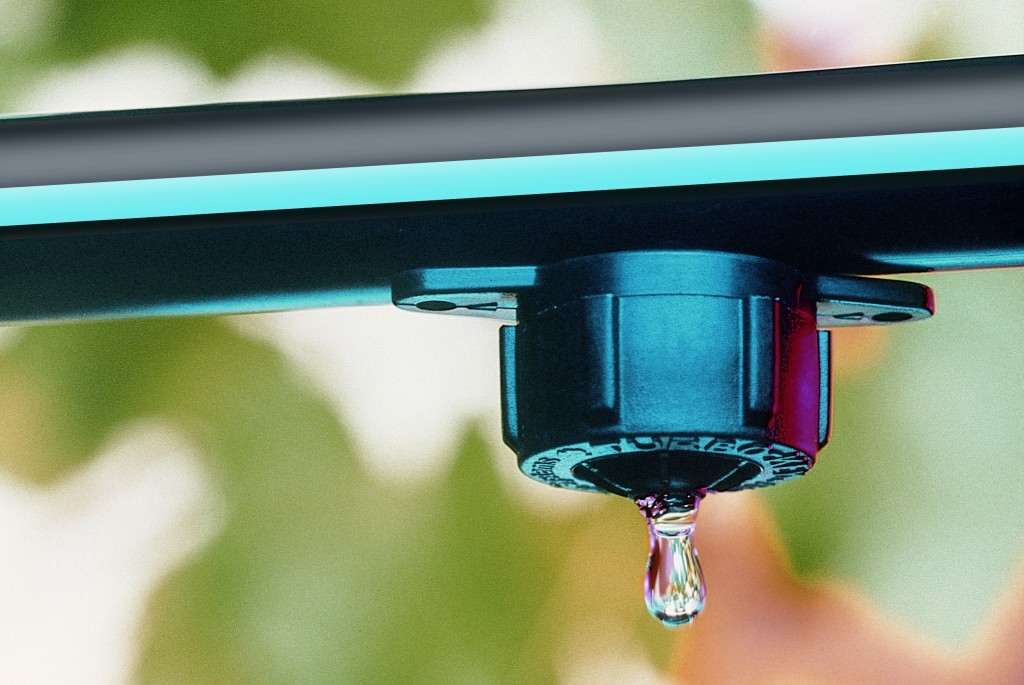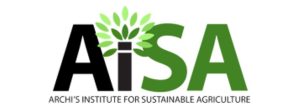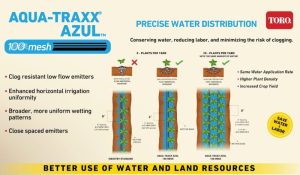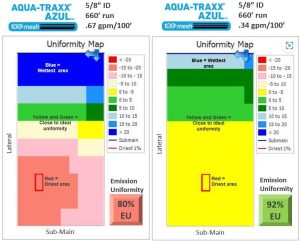 Drip irrigation may be defined according to a number of performance parameters including flow rates, wetting pattern, pressure rating and construction material. Regardless of the specific type, make, or model the following are drip irrigation definitions, characteristics, and best practices.
Drip irrigation may be defined according to a number of performance parameters including flow rates, wetting pattern, pressure rating and construction material. Regardless of the specific type, make, or model the following are drip irrigation definitions, characteristics, and best practices.
Water is applied at a low flow rate – Emission device flow rates are typically measured in gallons per hour (GPH), resulting in low application rates.
Water is applied for long periods of time – Irrigation duration may be hours rather than minutes when the application rate is low.
Water is applied frequently – Irrigation events may occur daily, or even muliple times per day, when the application rate is low.
Water is applied at low pressure – Operating pressures typically range between 10-30 psi, rarely exceeding 60 psi, for most emission devices.
Water is applied directly to the soil and the plant’s root zone – Water drips, or sprays, directly onto the soil and into the targeted plant’s root zone without wetting the plant or non-targeted areas, and without regard to the presence of wind. Depending on soil type and emission device, wetting patterns typically range from 0.5-6.0 feet for emitters and up to 40 feet for micro jets or sprays.
Water is applied through numerous emission devices – In point source drip irrigation, each plant is fitted with at least one emission device to service the plant’s water needs. In broadcast drip irrigation, a gridwork of emission devices wets the entire area, servicing all plants within the wetted area.
Water is filtered – To avoid plugging the relatively small passages inside drip emitters, 150-200 mesh filters are used to remove mineral or organic materials from the irrigation water.
Fertigation is enabled – Since water is applied directly to the root zone, there is an opportunity to apply nutrients along with the water.
Operation can be automated – Drip irrigation systems are often controlled with solenoid enabled valves that can be automatically actuated according to a user defined program entered into an irrigation controller.




